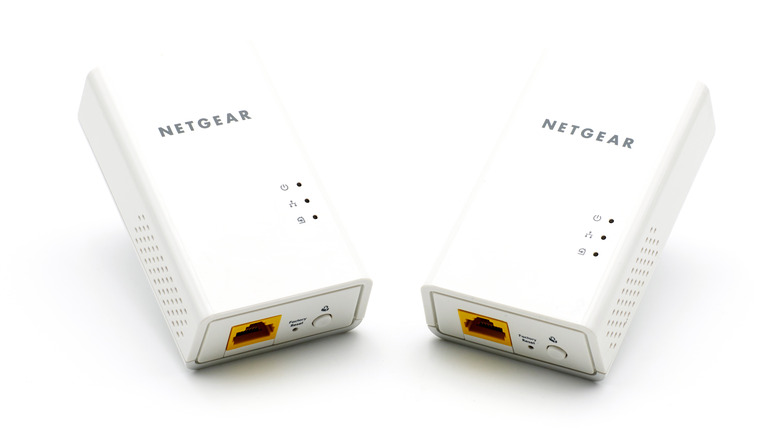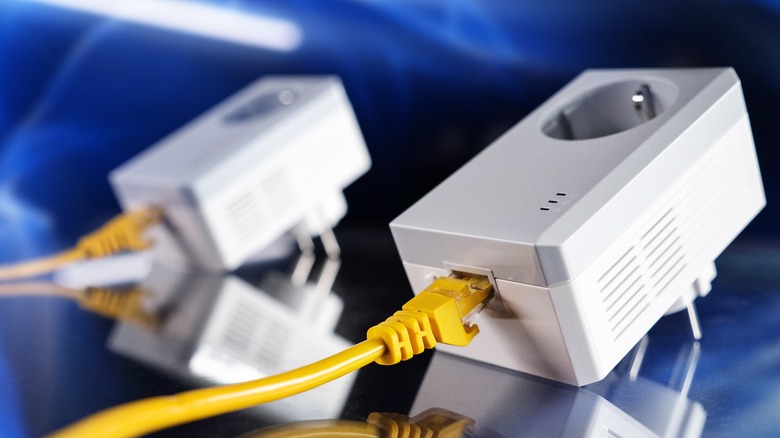What Is A Powerline Adapter?
Most people know about the two most common ways to get internet connectivity throughout their house. The first is the tried and true hardwired Ethernet cable. The thick, unwieldy Cat6 Ethernet cable connects whatever device you're using directly to the router. This option is typically used for gaming computers or in-home entertainment systems that require the fastest, most stable Internet connection possible. But in most cases, it simply isn't practical to run long stretches of cable from your router to every device in your house.
The second option is Wi-Fi, the wireless networking technology that connects virtually any "smart" device directly to the Internet. It is a far more convenient and cost-effective solution because it doesn't require a spiderweb of cables running through your house. The downside to Wi-Fi is that the wireless signal can diminish over long distances or get blocked by solid objects like walls or floors.
There's a third way to get a speedy, reliable Internet connection that many people may know nothing about. It doesn't require running cables that aren't already installed in your home, and it won't get bogged down by a degrading Wi-Fi signal. That option is called a powerline adapter.
Powerline adapters are fast, cheap, and easy to install
Powerline adapters send data through your home's existing electrical wiring in the same way as Ethernet cables. The majority of the powerline adapters you'll find available in stores today follow the HomePlug AV and AV2 technology standards developed by the HomePlug Powerline Alliance, ensuring they will work in almost any modern home. As TP-Link notes, the AV standard can reach a physical signal rate up to 600 Mbps, while AV2 can reach Gigabit speed.
Depending on the age and complexity of the home's electrical system, a powerline solution will generally perform on par with an Ethernet cable solution. An older or more complex electrical system won't likely perform as well as a new house with a modern electrical system, but the low cost of hardware and installation of any powerline solution makes the option worth a shot.
Powerline adapters usually come in pairs and typically look like small boxes that plug into any standard electrical outlet. They need to be plugged directly into a wall outlet — not an extension cord or power bar — to work properly. Typically, an Ethernet socket is found on the bottom of each device. The first adapter connects to the home's router, while the second can go into any outlet where another connection is needed.
Adapters can be wired or wireless to suit different needs, and connecting the devices and creating a network between them is as simple as pushing a button on each adapter. As the pandemic pushed people to stay home, and according to Gallup, the trend may become permanent. As such, a fast home network is more important than ever — and a powerline adapter might just be your best, cheapest option if you're in need of a better connection.

